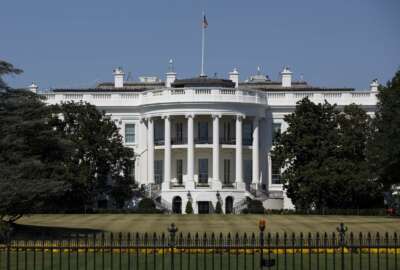

The Office of Management and Budget has instructed agencies to begin planning for the upcoming presidential transition.
Federal agencies have officially been instructed to begin to preparations for the upcoming presidential transition.
But the task may be more difficult, as agencies will be preparing for a presidential transition during a global pandemic — and juggling widespread vacancies among top political appointees at the same time.
The Office of Management and Budget gave agencies their first task to prepare earlier this week. Cabinet departments must each name a senior career executive to serve as their agency’s “transition director” by May 1.
These executives will serve on an agency transition director council, which the General Services Administration’s transition coordinator and OMB’s deputy director for management will co-lead.
Smaller agencies must name a transition point of contact by the same May 1 deadline.
Drawing on lessons learned from prior presidential transitions, the council will ensure the federal government has a comprehensive strategy to address non-career leadership turnover and other inter-agency challenges, OMB said.
Agency heads then have until Sept. 15 to prepare a succession plan for each senior non-career position within the organization, according to the OMB guidance.
Agency transition directors are responsible for preparing briefing materials for the presidential candidates by Nov. 1. They’ll also work with other career executives, who may be asked to temporarily fill leadership roles during the transition itself.
“The Presidential Transition Act promotes the orderly transfer of executive powers in connection with the expiration of the term of office of a president and the inauguration of a new president,” Russell Vought, acting OMB director, said Monday in a memo to agencies. “The activities required by the act are also helpful to prepare for leadership transitions that occur between the first and second terms of administrations.”
Experts have long advocated for transition preparations to begin early, regardless of whether the current president is seeking a second term or is giving way to an entirely new administration.
The Presidential Transition Act, which Congress updated in 2019, sets more concrete deadlines for some transition activities and codifies GSA’s role as the official coordinator.
Experts warn this year’s presidential transition — regardless of the outcome on Nov. 3 — may be particularly complex.
Many agencies are already juggling significant numbers of vacancies at the top, Anne Joseph O’Connell, a political scientist and professor at Stanford University’s Law School, said Wednesday afternoon during a Brookings webinar.
Of the 750 Senate-confirmed positions on the political appointee tracker from the Partnership for Public Service and Washington Post, 513, about two-thirds, have confirmed officials in place.
About 146 positions have no nominee, according to the tracker.
Agencies often have acting secretaries for at least a short period during presidential transitions, O’Connell said. But acting secretaries have served for 10% of the time during the first three years of the Trump administration, compared with 2.7% of the time during the Obama administration’s eight years, she said.
“If you think about the personnel upheaval and you think about the pandemic on top of that, I think it’s going to make it logistically difficult,” said Katie Tenpas, a non-resident senior fellow at Brookings. “In this case, it’s not a matter of being able to get together; you can’t have meetings. It’s just going to add another layer of complication in terms of trying to plan ahead.”
Career federal employees, as they have in prior presidential transitions, will serve an important role in these preparations, O’Connell said. But both she and Tenpas both feared the culmination of a presidential transition and the current health crisis could push more senior federal employees to retire in the coming year.
Nearly 32% of federal employees are eligible to retire in the next two years, according to the Government Accountability Office.
“It’s [about] building capacity back at the career level [and] getting young people interested, instead of going into the private sector or to consulting, to going in and making their careers in the federal government and [emphasizing] the difference they can make not just in times of crisis like we’re in now but in times of normalcy as well,” O’Connell said. “That’s critical to do.”
“Individual senior leaders can do a lot,” she added. “There are opportunities, even in chaos, for people with issue and management expertise to do the best they can for the country.”
Copyright © 2025 Federal News Network. All rights reserved. This website is not intended for users located within the European Economic Area.
Nicole Ogrysko is a reporter for Federal News Network focusing on the federal workforce and federal pay and benefits.
Follow @nogryskoWFED

